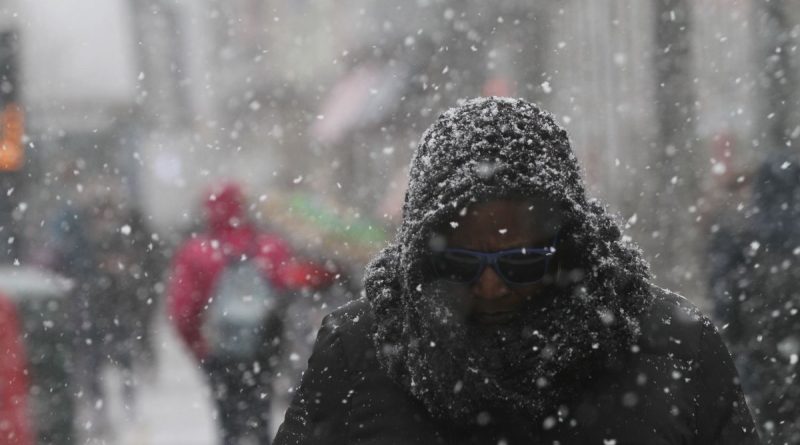Why are the snowflakes symmetrical and hexagonal? | The State
Christmas 1610, a man crosses the Charles Bridge in Prague, it snows and the flakes fall on the lapel of his coat. It’s Johannes Kepler, thinking about what New Year’s gift might be the most appropriate for his benefactor and friend Johannes Matthäus Wäckher von Wackenfelds.
Look at the snowflakes, and find a strange regularity in them.
As a good scientist, you can’t help but wonder about it: Why are they all hexagonal in shape?; Why don’t they have five sides or seven?
Kepler thinks this topic could be the reason for a trial, an excellent New Years gift for your benefactor.
This is how he writes his work Strena seu de nive sexangula (The six-angle snowflake), a little book of a scant 24 pages that is undoubtedly a masterpiece.

In the introduction Kepler writes to his friend:
“Yes, I know very well how fond you are of nothing; certainly not so much for its minimal value, but for the fun and delicious game one can have with it, as if it were a happy sparrow ”.
“Therefore, I imagine that for you a gift should be better, and better received, when it comes closer to nothing.”
Kepler ironizes here with his situation in Prague, always aware of the untimely and cut payments of Rudolf II, in whose court Kepler worked as an astronomer, because what better gift than to give nothing to whom he receives nothing?
On the other hand, Kepler makes a pun on nix (Latin) which means snow, and nichts (German), which means nothing. Kepler also thinks that there will be no better gift on those dates than to reflect on something that falls from the sky.
Why the hexagonal shape?
It is in the peaceful atmosphere of Prague that Kepler writes Strena seu de nive sexangula.
Kepler’s analysis is profound, and he deduces that the particular shape of the snowflakes must be a consequence of the how the particles are packed that constitute them.

Kepler thus unifies two concepts: the geometrically ordered world created by a mathematical God with a science that tries to explain natural phenomena by looking for the causes and laws that produce them.
You can think of those particles like globules that pile up occupying the least possible space, and the hexagonal packing is the best.
Just look at the beehives, or the tessellations of a plane, which can be triangles, squares or hexagons.
The packaging conjecture
In this same essay, Kepler raised his famous packaging conjecture, resolved 300 years laterands by Thomas Hales.
Years earlier, Kepler had corresponded with the English astronomer and mathematician Thomas Harriot about the optimal way to stack cannonballs on the deck of a ship.

Sir Walter Raleigh, to whom Harriot was an assistant, had posed the question to him when they were planning an expedition in 1585 to Virginia to establish the first British colony there.
Kepler’s conjecture states that the best way is the one used by fruit bowls for oranges, putting each orange of the next layer resting on the hole of the four oranges that are just below in the first layer. This method minimizes the space left by the gaps between the oranges.
For centuries, numerous mathematicians like Gauss tried to prove it, who proved it in the regular case.
At the 1900 International Congress of Mathematicians, it was included by David Hilbert among his list of the 23 most important problems for the 20th century (problem number 18).

But the matter did not progress further until the Hungarian mathematician Laszlo Fejes Toth reduced the problem to a finite but enormous number of calculations. Thomas Hales was able to do the math in the 1990s, aided by the power of the computer.
The resulting was published in Annals of Mathematics, and with that the conjecture was resolved.
Although even today not all mathematicians accept that this can be considered a true proof.

What we know about snow today
Kepler had no current knowledge of how matter is constituted. I didn’t know that a water molecule is made up of two hydrogen atoms and one oxygen atoms, forming an angle of 104.5 degrees.
These water molecules are bound by bonds with their neighbors, forming tetrahedra. When the temperature drops, they get closer to each other and they form those six-sided structures.
If this explanation is not satisfactory, and we want a more poetic one, we can resort to reading the precious story The Queen of the Rain Was in Love with the Prince of the Sky (The rain queen was in love with the prince of heaven), written by Eugene Mirabelli, which also shows why two snowflakes are never the same.
* Manuel de León Rodríguez is a Research Professor at the CSIC. This note originally appeared on The Conversation and is published here under a Creative Commons license.
Read the original article here.
Now you can receive notifications from BBC News Mundo. Download the new version of our app and activate them so you don’t miss out on our best content.
.


